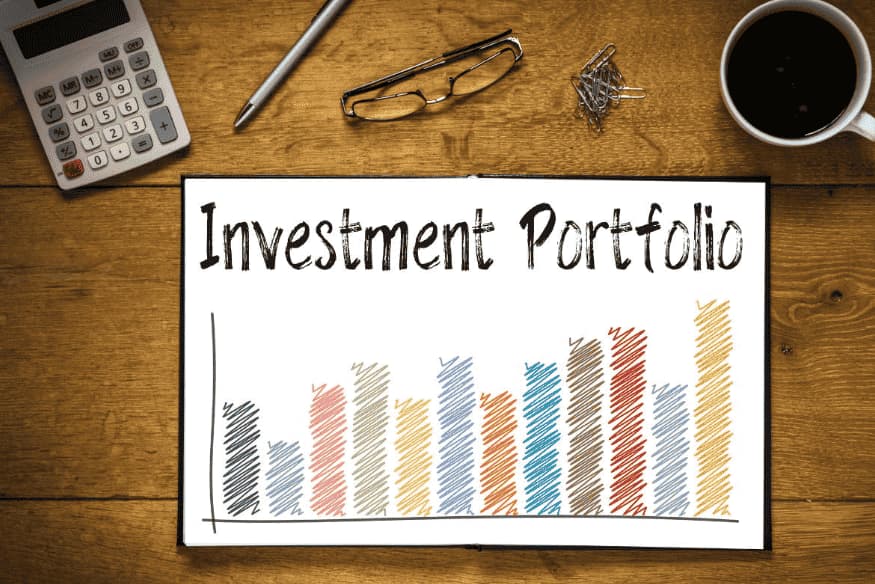Do you dream of retiring before the usual age of 65? Early retirement planning is key and requires careful thought. The FIRE (Financial Independence, Retire Early) movement aims for financial independence. This means you can work on your own terms. Think about retiring in your 40s or 50s and living life as you wish.
This dream is possible but comes with a challenge. Since Social Security benefits start at 62 and are reduced until you’re 66 or 67, you need a solid plan. You must budget, manage expenses, and invest wisely for retirement planning. It’s not just about stopping work. It’s about making sure you’re financially secure for the long term.
Key Takeaways
- FIRE movement inspires early retirement in one’s 40s or 50s, requiring significant financial planning.
- Achieving financial independence before 65 means planning for a self-funded retirement due to delayed or reduced Social Security benefits.
- To reach financial goals, live on 50% or less of your income to save more towards retirement.
- Utilize the rule of 25 and the 4% rule for estimating required savings and sustainable withdrawal rates.
- Plan for healthcare and taxes, significant early retirement factors, as health insurance remains a major challenge for early retirees.
- Invest in a balanced portfolio for long-term growth to ensure sustainable financial support during retirement.
Introduction to Early Retirement
Early retirement offers a chance to take control of your life and finances. It’s a tempting idea, but it requires careful planning and management of your savings. You need a good plan for retirement planning, focus on financial security, and smart handling of retirement savings.
First, you must face the challenges of early retirement. Think about adding 15 years to your life expectancy to prepare for a long retirement. It’s important to plan your spending to be about 80% of your current income. Also, remember that Medicare doesn’t cover all your medical costs, so plan for that in your retirement preparation.
There are different ways to help you retire early, from being very frugal to earning a lot and investing. Many follow the Financial Independence, Retire Early (FIRE) method, saving and investing a big part of their income. Some dream of retiring in their 30s or 40s this way. But, saving half your income might be hard for many because of high costs or debt. A six-figure income is often seen as necessary for the FIRE movement.
Experts suggest increasing your savings a little each year to fight inflation and keep your lifestyle. To figure out how much you’ll spend in retirement, subtract your expected income from Social Security and Pension Plans from your total spending. A 1998 study by Trinity University found that taking out 4% or less of your savings each year can make your money last at least 30 years.
| Metrics | Details |
|---|---|
| Inflation Rate (2021-2022) | More than 6% annually |
| Life Expectancy Adjustment | Add 15 years |
| Spending Requirement | 80% of gross income |
| Medical Coverage | Medicare does not cover all expenses |
| Annual Withdrawal Rate | 4% or less |
Getting financial security in early retirement is tough but rewarding. With disciplined retirement savings, good planning, and knowing your post-retirement costs, you can make it work.
Setting Your Financial Goals for Early Retirement

Planning for early retirement starts with setting clear financial goals. You need to decide when you want to retire, make a detailed retirement budget, and figure out how much you need to save. Let’s look at each step to help you plan well for early retirement.
Determining Your Desired Retirement Age
Choosing when you want to retire is key to your financial plan. In the U.S., men usually retire at 62 and women at 63, says the U.S. Bureau of Labor Statistics. But, retiring early, in your 40s or 50s, is possible with the FIRE movement. The sooner you retire, the less time you have to save, so you’ll need a strong savings plan.
Estimating Your Retirement Expenses
It’s vital to make a detailed retirement budget to know your savings needs. Aim to save 25 times your yearly expenses for retirement. Think about all costs like housing, healthcare, travel, and everyday living. Use the 4% rule, which means you can take out 4% of your savings each year, adjusted for inflation, without running out of money in 30 years.
Calculating Your Retirement Savings Target
With your retirement budget and age in mind, figure out how much you need to save. This includes putting money into tax-advantaged accounts like 401(k)s and IRAs. These accounts offer tax benefits that can boost your savings. For 2023, you can contribute up to $22,500 to a 401(k) if you’re under 50, or $30,000 if you’re 50 or older. IRAs allow contributions of $6,500 or $7,500, depending on your age.
| Factor | Details |
|---|---|
| Retirement Age | Early (40s-50s) or Average (60s) |
| Retirement Budget Calculation | 25 times annual expenses |
| The 4% Rule | Withdraw 4% of savings annually, adjusted for inflation |
| 401(k) Contribution Limits (2023) | $22,500 (under 50), $30,000 (50+) |
| IRA Contribution Limits (2023) | $6,500 (under 50), $7,500 (50+) |
Knowing and setting these financial goals is crucial for a secure early retirement. Regularly check and adjust your savings plan to make early retirement a reality.
Building a Robust Retirement Savings Plan

Building a strong retirement plan means taking key steps. This includes boosting your retirement account contributions and looking into different ways to make money. Here’s a guide to help you plan for a secure financial future.
Maximizing Retirement Account Contributions
Boosting your retirement savings starts with making the most of your 401(k) and IRA. In 2023, you can put up to $22,500 into your 401(k) and $6,500 into traditional or Roth IRAs. Also, don’t miss out on employer matching contributions. For example, a 6% match from your $60,000 job could add $1,800 a year.
Investment Strategies for Growth
For faster savings, focus on growth-focused investment strategies. A mix of stocks, bonds, and mutual funds can balance growth with risk. Start with a growth-heavy portfolio in your younger years and switch to a safer mix closer to retirement. Using low-cost funds or a financial advisor can help you reach your goals.
Exploring Alternative Income Streams
Adding extra income sources to your retirement savings can make a big difference. Side hustles, freelancing, or consulting can give you extra cash. Investing in real estate or starting a small business can also spread out your income. These options can help cover unexpected costs, like higher healthcare bills.
By combining these strategies—maximizing contributions, smart investing, and exploring extra income—you’re on track for a secure retirement. Remember, it’s not just about saving. It’s about making smart choices for long-term financial freedom.
Managing Healthcare Costs in Early Retirement
Early retirees face big challenges with healthcare costs, especially without employer plans. Managing these costs well can keep your retirement secure.
Understanding COBRA Coverage
COBRA lets you keep your health insurance for up to 18 months after retiring. But, you pay the full premium. It’s expensive, but keeps your care going and is good if you need ongoing medical attention.
Health Insurance Marketplace Options
The ACA marketplace has many health insurance plans. You might get premium tax credits if your income is low. These plans cover a lot, including pre-existing conditions. Looking at these options can help you find a plan that suits your budget and health needs.
Utilizing Health Savings Accounts (HSAs)
Health Savings Accounts are great for early retirees. You can deduct contributions, and use the money tax-free for medical costs. This makes HSAs a smart way to handle healthcare costs in retirement. Saving more by contributing while working can really add up.
Leveraging a Spouse’s Health Insurance Plan
If your spouse is still working when you retire early, using their health insurance can save money. Employer plans often cost less and cover more than individual plans. This is a good option until you turn 65 and get Medicare.
| Health Plan | Coverage Length | Cost | Key Points |
|---|---|---|---|
| COBRA Insurance | Up to 18 Months | High Premiums | Continues current coverage |
| ACA Marketplace Plans | Varies | Varies with Income | Includes premium tax credits |
| Health Savings Accounts | Indefinite (with sufficient balance) | Tax-advantaged savings | Funds can be used tax-free for medical expenses |
| Spouse’s Employer Plan | Until Spouse Retires | Lower Premiums | Often more comprehensive and affordable |
Financial Planning Guides for Early Retirement

Planning for early retirement is complex. That’s why a solid retirement financial guide is key. Only 25% of workers feel sure they have enough money for retirement, says a survey by the Employee Benefit Research Institute. This shows how important it is to plan well.
Understanding the “4% rule” is a big part of getting ready for retirement. It means you can take out 4% of your savings each year, adjusting for inflation, to last 30 years. To make a good retirement plan, focus on saving more in retirement accounts, choosing smart investments, and finding other ways to make money.
The average retirement age in the U.S. is about 62 for men and 63 for women, says the U.S. Bureau of Labor Statistics. This shows how crucial it is to plan ahead. Here are some tips for good financial planning:
- Maximize Retirement Contributions: For 2023, you can put up to $22,500 into a 401(k) if you’re under 50, and $30,000 if you’re 50 or older. IRA limits are $6,500 and $7,500 respectively.
- Healthcare Planning: Managing healthcare costs is key. COBRA lets you keep your employer’s health insurance, but it can be pricey, with costs possibly going up by up to 102%. Look into Health Savings Accounts (HSAs) and state insurance markets for cheaper options.
- Investment and Savings Strategy: Having different income sources, like stocks, bonds, rental properties, or a side job, can help you earn more money.
Early retirement resources talk about FIRE (Financial Independence Retire Early). This means saving a lot and investing wisely to retire way before the usual age. Knowing how to handle Social Security benefits is also crucial, as waiting to take them can increase your payments by up to 30%.
Checking your finances often and having a safety net for market ups and downs can help avoid financial surprises. By following these tips, you can aim for an early and secure retirement.
Strategies to Minimize Expenses
Minimizing expenses is key to retiring early. By living frugally, managing debt, and cutting costs, you can reach financial freedom. Let’s look at some effective strategies.
Adopting Frugality in Daily Life
Living frugally means making smart choices about how you spend. Use the 50/30/20 rule: 50% for must-haves, 30% for fun, and 20% for savings or paying off debt. This helps you live simply and save more.
- Shop with a list to avoid buying things you don’t need.
- Choose generic brands for everyday items.
- Cancel any memberships you don’t use.
- Use the library for books and movies.
Managing and Reducing Debt
Reducing debt is key to retiring early. First, find high-interest debts and make a plan to pay them off. You can use the snowball or avalanche method. Stay disciplined to avoid new debt.
- Look into consolidating debts for lower interest rates.
- Set up automatic payments to avoid late fees.
- Talk to creditors for better terms or settlements.
Creative Ways to Cut Costs
There are creative ways to save money for retirement. Downsizing your home can save a lot. Also, investing in low-cost index funds is smart, offering good rates with some funds having no fees.
| Cost-Cutting Technique | Potential Savings |
|---|---|
| Downsizing Home | Substantial Increase in Savings |
| Investing in Low-Cost Index Funds | Competitive Rates, Some with Zero Fees |
| Regular Portfolio Rebalancing | Optimized Returns, Maintained Risk Levels |
Using these tips on saving money, paying off debt, and cutting costs sets you up for a great retirement. Living simply and being careful with money helps you reach financial freedom faster.
Investment Principles for Early Retirees
Starting early retirement means learning key investment rules. It’s important to know how to spread out your money and handle ups and downs in the market. This knowledge helps you keep your money safe and growing over time.
Understanding Diversification
Diversifying your investments is key to reducing risks and boosting returns. By putting your money in different types of assets, you can soften the blow of market changes. It’s not just about having many investments. It’s about picking a mix that fits your retirement goals.
Think of mixing stocks, bonds, real estate, and other options. This mix helps support your early retirement dreams.
Navigating Market Risks
Early retirees face big challenges from market ups and downs. Managing these risks means keeping an eye on your investments and adjusting them as needed. A flexible approach helps you avoid big losses.
Using tools like stop-loss orders and hedging can also protect your money. These strategies help keep your retirement plans on track.
Long-term Growth Strategies
For early retirees, growing your money over time is crucial. Investing in assets like stocks and real estate can lead to big gains. A mix of aggressive and safe investments helps keep your money strong.
Choosing investments that focus on growth is key. This ensures your money can last and grow during a long retirement.
| Investment Type | Key Benefits | Risks Involved |
|---|---|---|
| Stocks | High potential for growth | High market volatility |
| Bonds | Stable income stream | Lower returns compared to stocks |
| Real Estate | Tangible asset with growth potential | Market dependent liquidity and value fluctuations |
| Mutual Funds | Diverse investment with professional management | Management fees and market risk |
| Index Funds | Low cost with market-matching returns | Limited flexibility in portfolio adjustment |
Importance of Regular Financial Reviews

Regular financial reviews are key to a successful early retirement plan. They help you keep an eye on your finances and make needed changes. This ensures you stay on track to meet your financial goals.
Tracking Your Spending
Spending monitoring is vital for managing your money well. By watching your spending closely, you can spot where you might be spending too much. This helps you follow your budget better and saves more for savings and investments.
It’s important to regularly check your spending to make sure it matches your retirement plans.
Adjusting Your Investment Portfolio
Portfolio rebalancing is key to protecting your investments from market ups and downs. It keeps your investments in line with your risk level and retirement plans. By regularly checking and adjusting your investments, you can get the best returns while taking on less risk.
This means looking at your mix of assets and changing it as needed to keep your investments safe and on track for your financial goals.
Reviewing Retirement Goals Periodically
It’s crucial to regularly check your retirement planning to stay on track for early retirement. Your financial situation and goals can change over time. So, it’s important to update your retirement plan to reflect these changes.
This includes looking at your retirement goals, adjusting your savings plans, and making sure your investments still support your goals. By regularly checking your progress, you can fix any issues and make smart choices for your future.
| Financial Review Aspect | Action | Benefit |
|---|---|---|
| Tracking Spending | Monitor expenses | Identify overspending, increase savings |
| Adjusting Investment Portfolio | Rebalance portfolio | Maximize returns, minimize risks |
| Reviewing Retirement Goals | Reassess goals and strategies | Stay on track, achieve milestones |
In summary, regular financial reviews are important for tracking spending, adjusting investments, and checking retirement plans. These steps are key to reaching your early retirement goals. By making these reviews a regular part of your routine, you can move confidently towards financial freedom.
Conclusion
Achieving early retirement takes a lot of planning and understanding of your finances. It’s important to set clear financial goals and manage healthcare costs. Every step is key to reaching early retirement.
Maximizing contributions to tax-advantaged accounts and diversifying investments is crucial. Regularly checking your financial goals helps too. This proactive strategy is vital for a smooth retirement.
Many dream of early retirement for the freedom to follow their passions without money worries. This dream can come true with disciplined saving, smart investing, and careful spending. Good tax planning and keeping an eye on your retirement plans are also important.
Knowing about Social Security, healthcare costs, and estate planning is crucial for a strong retirement plan. Getting advice from a financial advisor can help navigate the complex world of retirement planning. With hard work and a proactive mindset, your dream of financial independence in retirement can come true. You’ll be able to enjoy your golden years just how you want.










